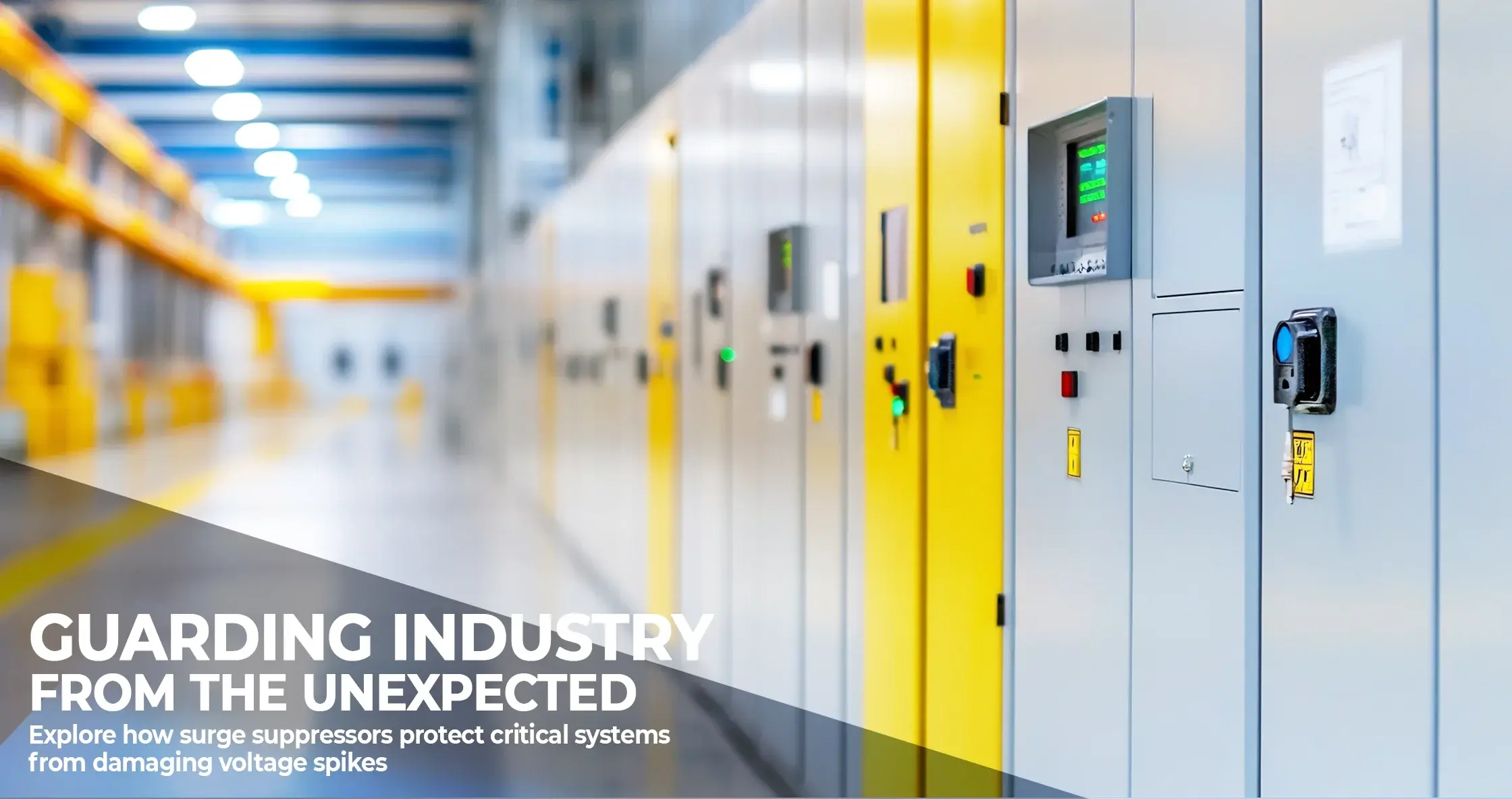A surge suppressor is an essential device in industrial environments, acting as a protective barrier against sudden voltage spikes. These electrical surges may result from lightning strikes, equipment switching, or faults within the power system. Without a reliable surge suppressor, sensitive industrial equipment becomes vulnerable to serious damage, often leading to expensive repairs and extended downtimes. Understanding the role of surge suppressors and their importance in industrial applications is key to ensuring operational efficiency and safeguarding valuable assets.
What is a Surge Suppressor?
A surge suppressor is a device designed to limit voltage transients and protect electrical equipment from voltage spikes. These devices sense excessive voltage and divert the surge energy away from connected equipment, typically to the ground. Surge suppressors are key components in safeguarding industrial equipment, as they help ensure the smooth operation of sensitive systems, from simple electronic devices to complex machinery.
How Does a Surge Suppressor Work?
Surge suppressors operate by utilizing various components that react to excess voltage. When a surge occurs, these devices switch from a non-conductive to a conductive state, allowing the surge current to flow safely to the ground rather than through the equipment. This helps to reduce the voltage level that reaches sensitive equipment, thereby preventing damage. Surge suppressors can be classified into various types depending on their installation and the method they use to handle surges.
Types of Surge Suppressors
- Type 1 Surge Suppressors: Installed at the service entrance, these protect systems from external surges, such as lightning strikes.
- Type 2 Surge Suppressors: Usually installed at distribution panels, they protect against internal surges caused by switching actions in the electrical system.
- Type 3 Surge Suppressors: These are point-of-use devices designed to protect specific equipment from transients and surges.
Best Practices for Using Surge Suppressors
To effectively use surge suppressors in industrial settings, it's advisable to conduct a thorough risk assessment of the facility's electrical system. This helps in identifying the specific types and locations for installing surge suppressors. Proper installation and maintenance play a vital role in maintaining their effectiveness. Regular testing and replacement of outdated units can ensure ongoing protection against voltage surges.
Benefits of Surge Suppressors in Industry
Incorporating surge suppressors in industrial applications offers several advantages. Firstly, they significantly reduce the risk of equipment damage due to power surges, ultimately leading to lower repair costs. Additionally, they help extend the lifespan of electrical components by minimizing exposure to damaging voltage levels. As industrial operations depend heavily on electronic systems, preventing downtime due to equipment failure is critical for improving productivity and maintaining operational continuity.
Enhancing Safety and Reliability
Surge suppressors also contribute to the overall safety of an industrial environment. By protecting sensitive equipment, they help avoid dangerous situations that can arise from electrical faults. If equipment fails due to surges, it not only endangers workers’ safety but can also lead to compliance violations. Therefore, ensuring a reliable surge protection strategy is indispensable for promoting workplace safety.
Selecting the Right Surge Suppressor
When choosing a surge suppressor for industrial applications, various factors should be considered, including voltage and current ratings, the environment in which they'll be used, and the specific applications requiring protection. Understanding these parameters helps in selecting a device that provides adequate protection and aligns with operational requirements.
Key Features to Look For
Look for surge suppressors that offer high surge capacity ratings, fast response times, and strong durability to withstand multiple surge events. Models like the Allen-Bradley Surge Suppressor Diode Module 12-250V DC 100-FSD250 and Allen-Bradley Surge Suppressor RC Module 110-280VAC 100-FSC280 are excellent choices that meet high-performance criteria for industrial settings.
Related Product Collections
Surge Protection Devices
Safeguard your electrical systems with our range of Surge Protection Devices designed to handle voltage spikes and transients. These solutions ensure optimal protection for sensitive industrial equipment, maintaining uptime and safety across operations.
Power Supplies
Maintain reliable and consistent power delivery with our industrial-grade Power Supplies. Engineered for efficiency and durability, they provide stable voltage output, complementing your surge suppression setup and preventing system disruptions.
Circuit Breakers
Ensure comprehensive electrical protection with our collection of Circuit Breakers. Built for precision and performance, these breakers prevent overloads, short circuits, and other electrical hazards that can compromise system integrity.
Conclusion
Surge suppressors play a crucial role in protecting industrial environments from the dangers of voltage surges. With their capacity to mitigate potential damage to equipment, reduce downtime, and enhance overall safety, investing in quality surge suppressors is essential for any industrial operation. Regular maintenance and appropriate selection will further ensure optimal performance, safeguarding vital machinery and preserving investments made in technology and infrastructure.
Frequently Asked Questions (FAQ)
1. Why do I need surge suppressors in industrial settings?
Surge suppressors are critical in preventing damage to electrical equipment from voltage spikes, which can lead to costly repairs and operational disruptions.
2. What types of surge suppressors should I consider?
Consider Type 1 for external surge protection, Type 2 for supplemental protection at panels, and Type 3 for point-of-use applications.
3. How often should surge suppressors be tested or replaced?
Regular testing is recommended every 6 to 12 months, and units should be replaced based on their lifespan or after a significant surge event.
By understanding the value and function of surge suppressors, industrial facilities can take significant steps toward a safer and more reliable electrical system.



